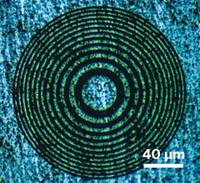Advertisement
Grab your lab coat. Let's get started
Welcome!
Welcome!
Create an account below to get 6 C&EN articles per month, receive newsletters and more - all free.
It seems this is your first time logging in online. Please enter the following information to continue.
As an ACS member you automatically get access to this site. All we need is few more details to create your reading experience.
Not you? Sign in with a different account.
Not you? Sign in with a different account.
ERROR 1
ERROR 1
ERROR 2
ERROR 2
ERROR 2
ERROR 2
ERROR 2
Password and Confirm password must match.
If you have an ACS member number, please enter it here so we can link this account to your membership. (optional)
ERROR 2
ACS values your privacy. By submitting your information, you are gaining access to C&EN and subscribing to our weekly newsletter. We use the information you provide to make your reading experience better, and we will never sell your data to third party members.
Materials
Lightweight, Tunable Lenses Made From Graphene
Optics: Ultrathin graphene lenses could focus light for compact optical devices
by Neil Savage
January 22, 2015

An international team of researchers has made tunable, extremely lightweight lenses using graphene (ACS Photonics 2015, DOI: 10.1021/ph500197j). The lenses act like microscopic versions of ones used in lighthouses and could help focus light onto small pixels in cell phone cameras or route laser light in computer chips that move data with photons instead of electrons.
Haider Butt of the University of Birmingham, in England; Qing Dai of the National Center for Nanoscience & Technology, in Beijing; and their colleagues designed Fresnel lenses, which are flat lenses consisting of concentric rings. The rings diffract light to create constructive interference, thus focusing the light. Lighthouses have long used Fresnel lenses to focus their beacons. The design would be key for miniaturized applications, such as in computer interconnects, because the lenses could have long focal lengths while remaining flatter, thinner, and lighter than curved lenses.
The researchers built the 50-µm-wide lenses by depositing 0.335-nm-thick layers of graphene on glass using chemical vapor deposition and then carving out the concentric circles with photolithography. The graphene rings diffract light as it passes through the lens.
The team found that the intensity of the focused light doubled when they went from five-layer to 10-layer versions of the lenses. Also, in an applied electric field, the graphene’s ability to absorb light changed, allowing the researchers to tune the intensity of the focused light.
The lenses focused 850-nm light, in the near-infrared range, but the team would like to design lenses that work at terahertz frequencies, which have promising applications in security, spectroscopy, and biological imaging.





Join the conversation
Contact the reporter
Submit a Letter to the Editor for publication
Engage with us on Twitter